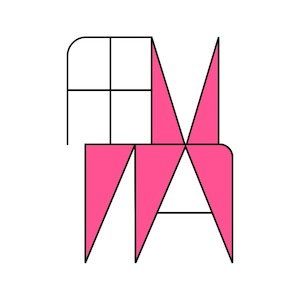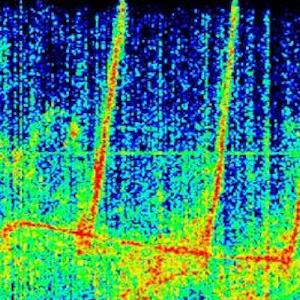Ian Good, Catherine Hilgers and Benjamin Inch put out the Rave Ethics in 2014. The 10-page guide is like a comic book of conduct, seemingly a consequence of peace-on-the-dance-floor instead of 'death-on-the-dancefloor'. In this age of no-brain EDM arenas, exclusive posh beach festivals and institutional showcases, 'Rave Ethics' has little presence. However like most 'good ideas' it has value, good intent and character. Replete with diagrams, photos and DIY instructions, the booklet makes for a fun and practical tool for the gullible masses. One might laugh at the term ethics, given the industry consumed the rave and most ravers a while ago. The average electronic-dance-music consumer, up on 'boutique drugs', branded alcohol and 'sugar bombed' food, inside a hyper energised arena has little concern over ethics. It's consumption till dawn (or dusk), "i have my bracelet full of e-credit". Rave ethics for the 'hashtag masses' constantly pressing upon their I-phones is pretty quixotic to start with. Rave Ethics was first published by Unter Mord, a rather discreet techno-house label and event series based in New York.
Rules of the Rave:
1. Ethical behaviour
2. Safety
3. Fun
The guide asks the raver to contemplate, before commencing with the revelry " before the rave, whether weeks, months, days, or hours ahead, take a few moments to consider why it is you’re interested in attending and what the experience might mean to you..." The importance of free water! Especially inside most EDM arenas where nothing is free and most bar-tenders know very well the value of water for a serial-tripper. Rave Ethics puts out the importance of water via cute 'molecular poetry'. It also emphasises that 'sharing is caring'. Like most expert party animals, the writers place due emphasis on knowing your drugs, the limits of your body as well as taking care of someone in paranoid distress. Post-rave instructions include bananas, kale chips, multivitamins and good relaxation environments and postures. Between the instructions, a haute-couture cow-print velvet ladies bag shows up. Ok.
One of our favourite bits in the guide, is the message to all party promoters, plus their guests, who have a big responsibility to be aware : of harassment in the clubs and raves. The segment talks from a first person perspective of someone who is feeling oppressed (or even suffocated) by the space ... “I can’t close my eyes while I’m dancing” and “I quit parties way before I wanted to" We suggest you check out the Guidelines To Respectful Flirting And Safer Dance-floors.
Rules of the Rave:
1. Ethical behaviour
2. Safety
3. Fun
The guide asks the raver to contemplate, before commencing with the revelry " before the rave, whether weeks, months, days, or hours ahead, take a few moments to consider why it is you’re interested in attending and what the experience might mean to you..." The importance of free water! Especially inside most EDM arenas where nothing is free and most bar-tenders know very well the value of water for a serial-tripper. Rave Ethics puts out the importance of water via cute 'molecular poetry'. It also emphasises that 'sharing is caring'. Like most expert party animals, the writers place due emphasis on knowing your drugs, the limits of your body as well as taking care of someone in paranoid distress. Post-rave instructions include bananas, kale chips, multivitamins and good relaxation environments and postures. Between the instructions, a haute-couture cow-print velvet ladies bag shows up. Ok.
One of our favourite bits in the guide, is the message to all party promoters, plus their guests, who have a big responsibility to be aware : of harassment in the clubs and raves. The segment talks from a first person perspective of someone who is feeling oppressed (or even suffocated) by the space ... “I can’t close my eyes while I’m dancing” and “I quit parties way before I wanted to" We suggest you check out the Guidelines To Respectful Flirting And Safer Dance-floors.
Download Ethics Of Rave.
"Take responsibility for the energy you bring in-to the space"
In The Name Of MDMA!
Amphetamines and electronic music has an undeniable connection. Dare we say, that one is intrinsically linked to the other in ways indescribable and indispensable. Proof is in the millions of post-rave revelations we see in photos, memes, sketches, poetry and the music itself. Ricardo Villalobos may explain better. Patterns in the music connect with the patterns of consumption? The audience, organisers, artists, pushers, runners, medics, the state and even the cops are all tacit in this 'deal'. At home here in Spain, we see blaring examples of such 'ethics' every summer. However why question something so obvious? yet something so powerful, however illegal. Survive a night inside any major spanish EDM festival without drugs? "Get lost, it's impossible" and anyways there is no stigma in this culture of 'routine consumption'. "A nonjudgmental approach may or may not be rooted in acceptance and empathy. The big economic value of drugs has lead to acceptance but without the empathy. This prohibits most drug users in Spain to speak freely as they are often stigmatised to talk about their negative experiences or addiction" says Alberto Casero, a PHD of post-modern culture at the University of Barcelona. However the party must go on... Don't Forget To Dance Safe ! DanceSafe was founded in 1998 by Emanuel Sferios in the San Francisco. After initially using MDMA in 1985 as a form of self-therapy, while it was still an unknown substance in raves and techno clubs, popular mostly with punks in Holland and England. "Therapists in the mid 80's were aware of MDMA and they were using it on some patients, way before it became contra-banned and spilled allover dance-clubs and raves" recalls Emanuel in a recent seminar of Multidisciplinary Association for Psychedelic Studies (MAPS). Late 80's, Emanuel was moved by the abuse of substances and the deaths arising from fake ecstasy pills. Inspired to help he established Dance Safe, so people that choose to use would be doing so knowing exactly what substances they were taking. As a designated 501 public health organisation, DanceSafe stands to promote health and safety within the nightlife community by operating under the guise of two fundamental principles - Harm reduction and peer-based substance education. The organisation has a clear non-judgmental attitude that neither condones nor condemns drug use. Emanuel Sferios goes unto say "I had to make a tribute to MDMA, and so I started making the movie. It's called MDMA, The Movie"
Photo by Wolfgang Tillmans, Love (hands praying), 1989 East Berlin.
"Take responsibility for the energy you bring in-to the space"
In The Name Of MDMA!
Amphetamines and electronic music has an undeniable connection. Dare we say, that one is intrinsically linked to the other in ways indescribable and indispensable. Proof is in the millions of post-rave revelations we see in photos, memes, sketches, poetry and the music itself. Ricardo Villalobos may explain better. Patterns in the music connect with the patterns of consumption? The audience, organisers, artists, pushers, runners, medics, the state and even the cops are all tacit in this 'deal'. At home here in Spain, we see blaring examples of such 'ethics' every summer. However why question something so obvious? yet something so powerful, however illegal. Survive a night inside any major spanish EDM festival without drugs? "Get lost, it's impossible" and anyways there is no stigma in this culture of 'routine consumption'. "A nonjudgmental approach may or may not be rooted in acceptance and empathy. The big economic value of drugs has lead to acceptance but without the empathy. This prohibits most drug users in Spain to speak freely as they are often stigmatised to talk about their negative experiences or addiction" says Alberto Casero, a PHD of post-modern culture at the University of Barcelona. However the party must go on... Don't Forget To Dance Safe ! DanceSafe was founded in 1998 by Emanuel Sferios in the San Francisco. After initially using MDMA in 1985 as a form of self-therapy, while it was still an unknown substance in raves and techno clubs, popular mostly with punks in Holland and England. "Therapists in the mid 80's were aware of MDMA and they were using it on some patients, way before it became contra-banned and spilled allover dance-clubs and raves" recalls Emanuel in a recent seminar of Multidisciplinary Association for Psychedelic Studies (MAPS). Late 80's, Emanuel was moved by the abuse of substances and the deaths arising from fake ecstasy pills. Inspired to help he established Dance Safe, so people that choose to use would be doing so knowing exactly what substances they were taking. As a designated 501 public health organisation, DanceSafe stands to promote health and safety within the nightlife community by operating under the guise of two fundamental principles - Harm reduction and peer-based substance education. The organisation has a clear non-judgmental attitude that neither condones nor condemns drug use. Emanuel Sferios goes unto say "I had to make a tribute to MDMA, and so I started making the movie. It's called MDMA, The Movie"
Photo by Wolfgang Tillmans, Love (hands praying), 1989 East Berlin.





























0 -